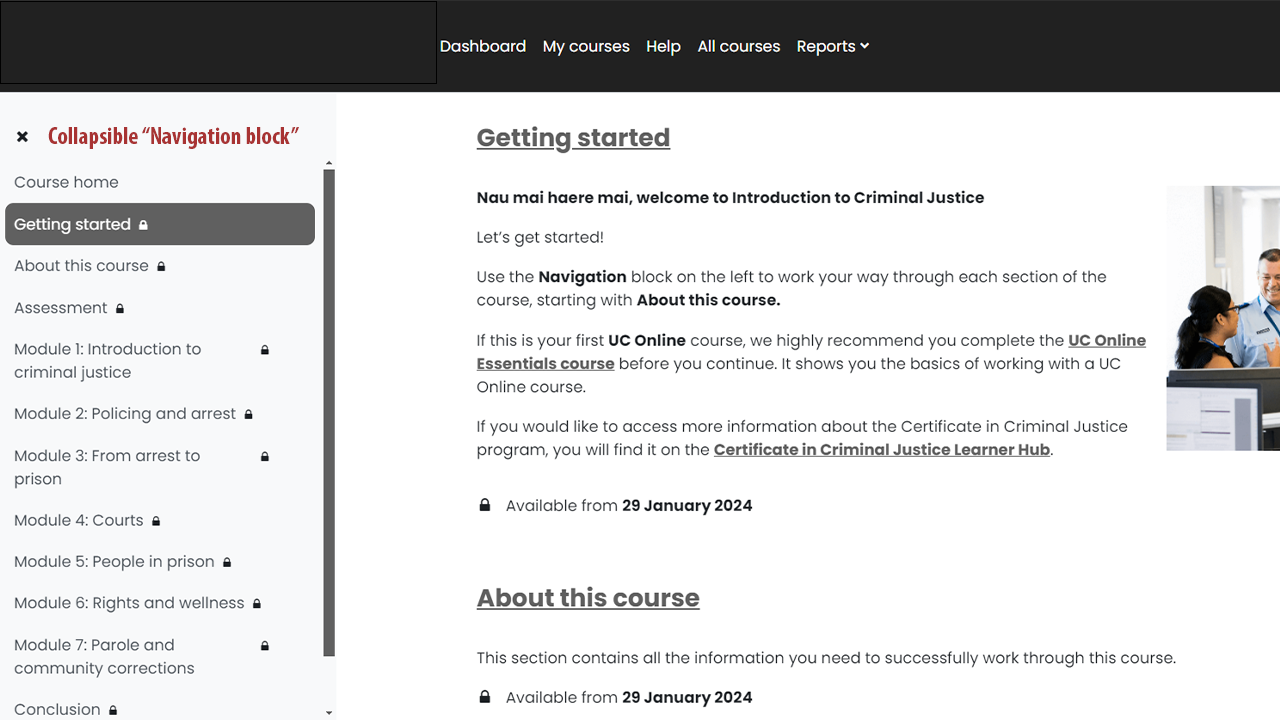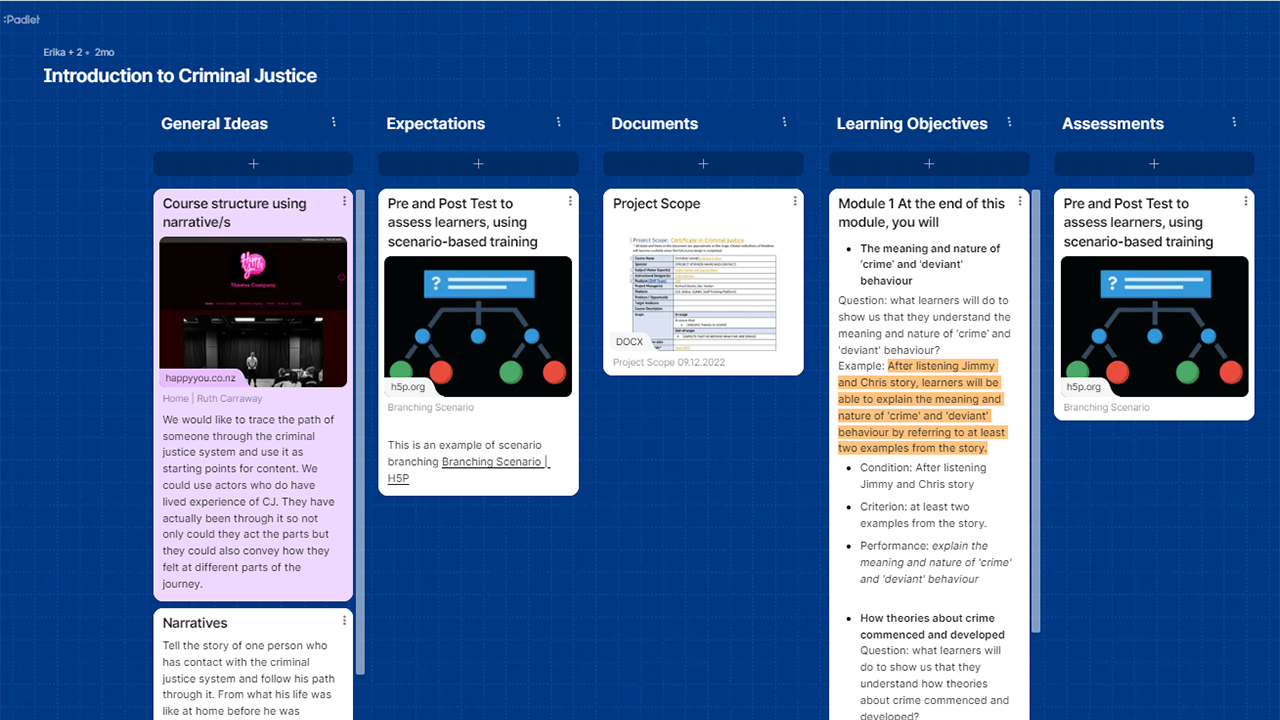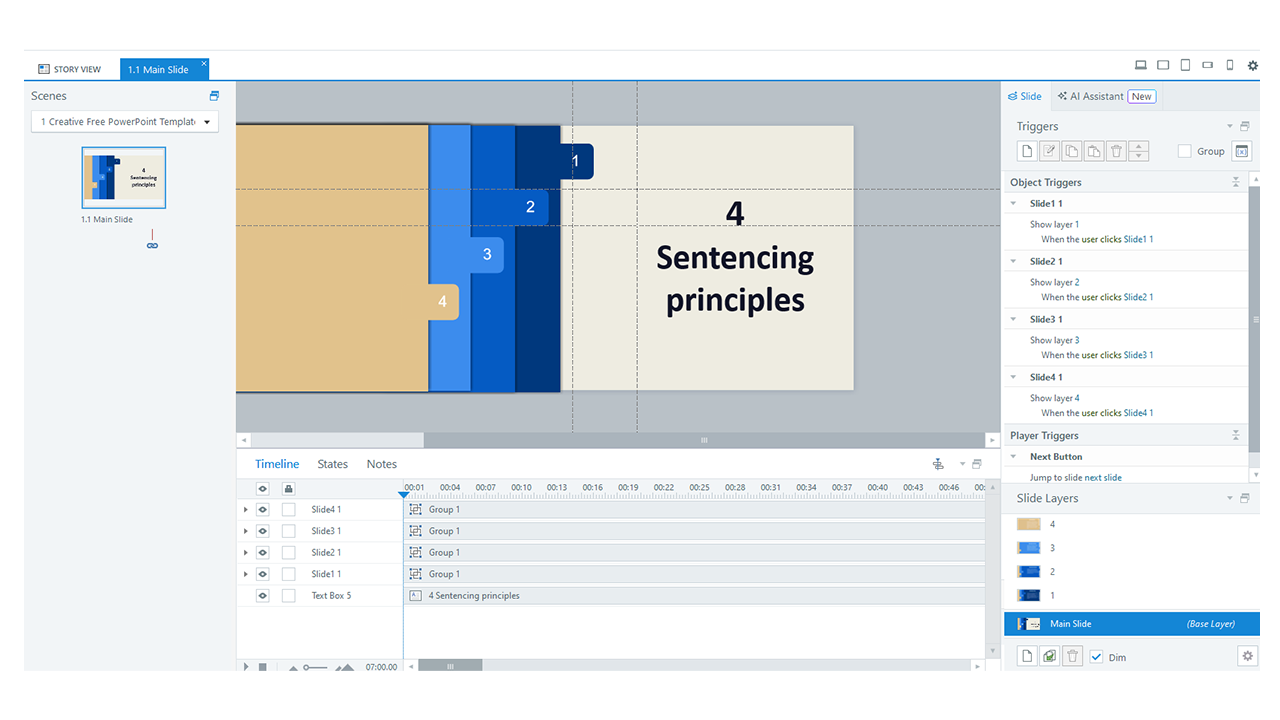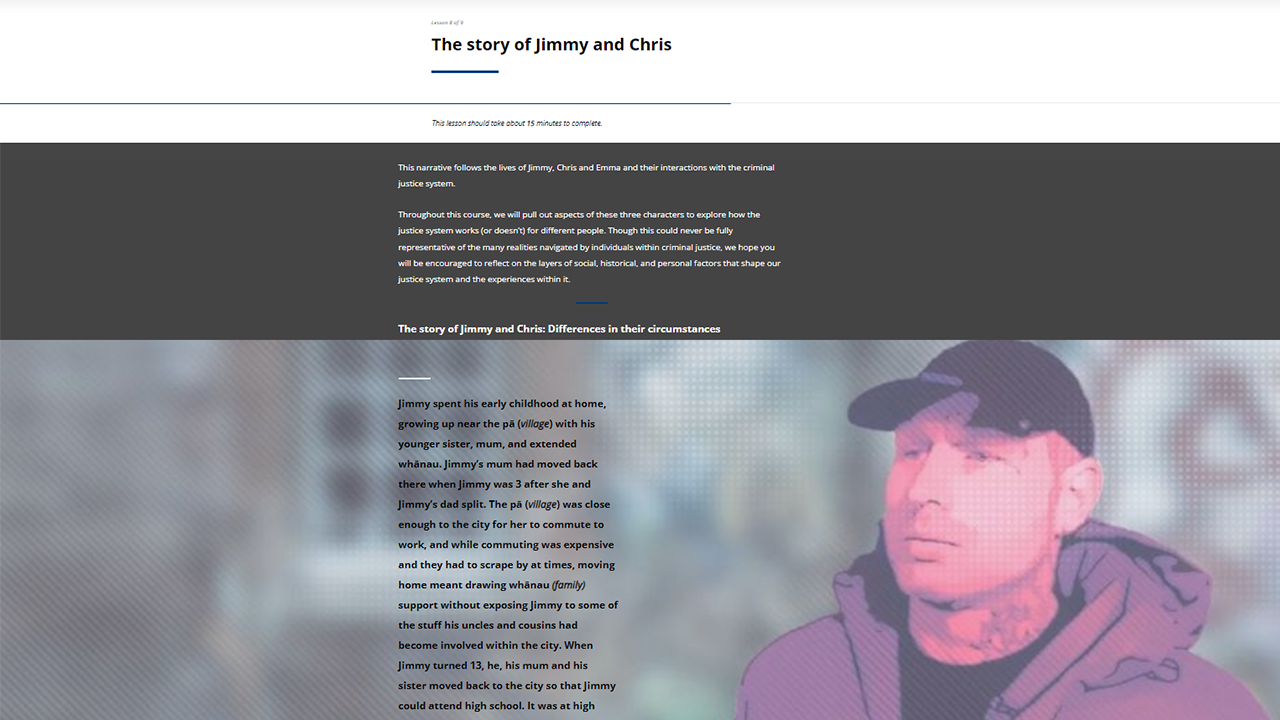Introduction to Criminal Justice
Overview
This course was originally created for on-campus students at the University of Canterbury. In February 2023, it was chosen to be redesigned for online delivery, and I was appointed as the instructional designer to lead the project. The decision to move the Certificate in Criminal Justice online came after a noticeable drop in lecture attendance, and also many requests from potential students who wanted the qualification to be fully available online as they live in remote areas around the country. Introduction to Criminal Justice is the foundational course for the programme.
Analysis
The goal of the course was to provide learners with a comprehensive and clear understanding of the criminal justice system in New Zealand. I conducted multiple meetings with the Subject Matter Expert (SME) to analyse the learning environment, identify requirements, tailor the course to be relevant using real-world scenarios and ensure the course was flexible enough to suit diverse learner needs. We used a Padlet board to brainstorm ideas and register each decision in a project scope document.
Design and Development
I used instructional design principles such as constructive alignment to ensure the content, assessments and course learning outcomes were aligned. We mapped out the design strategy in an Excel sheet used by the team, which is also used to identify videos/animations, that will need to be created by the Media Team. I used Rise360 to develop the course content and Storyline360 and Adobe Illustrator to create images and interactive graphics. The Learning Management System (LMS) used was Totara (Moodle version 3.5).
Course Features and Highlights
One of the standout features of this course is the design approach we took. We used story-based learning to present the content. Using a narrative of two friends who commit a crime, we examine their lives before they were arrested, their contact with the police, the courts, their lives and challenges in the criminal justice system. We use moments in this story to act as trigger points for content. That way, the whole course became a narrative.
Another critical element is the use of multimedia elements such as interviews with experts in criminal justice, people who work in corrections, and police officers, as well as interactive infographics to enhance understanding and retention of complex topics.
Challenges
We encountered several challenges during the course development. One significant issue was coordinating with a large number of guest speakers, all of whom are criminal justice experts, and managing the actors' availability for filming, as they had busy schedules. To address these challenges, we explored various contingency plans to ensure the videos could be produced.
Another challenge towards the end of the development process, we realised that a topic from Module 6 needed to be moved to Module 3. This adjustment disrupted the narrative flow slightly. I reviewed the content and suggested some changes to the SME to maintain coherence. Afterward, we involved the copy editor in proofreading and ensuring consistency throughout the revised sections.
Feedback and Outcomes
Learner feedback has been overwhelmingly positive, with many praising the clarity and accessibility of the course content. This high level of satisfaction is reflected in a Net Promoter Score (NPS) of 9.20 out of 10. Collaborating with the SME not only allowed me to share and implement innovative ideas but also contributed to applying improvements in the on-campus version of the course. As a result, the SME was honoured with the Outstanding Teaching and Learning Transformation Award in 2024. The award committee noted: "The sub-committee was particularly impressed with how you transformed 'Introduction to Criminal Justice' across digital, pedagogical, and bicultural dimensions in such a short time, and augmented your pedagogical innovations with reflection and scholarship. Your contributions to the University are creative, distinctive, and exemplary." This recognition highlights the impact of our collaborative efforts on both the online and on-campus learning experience.




